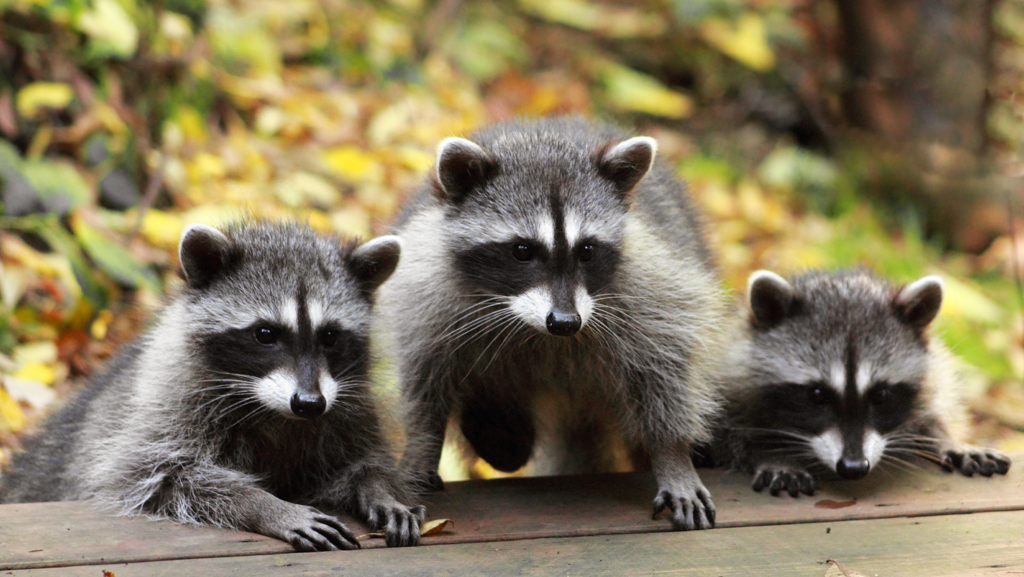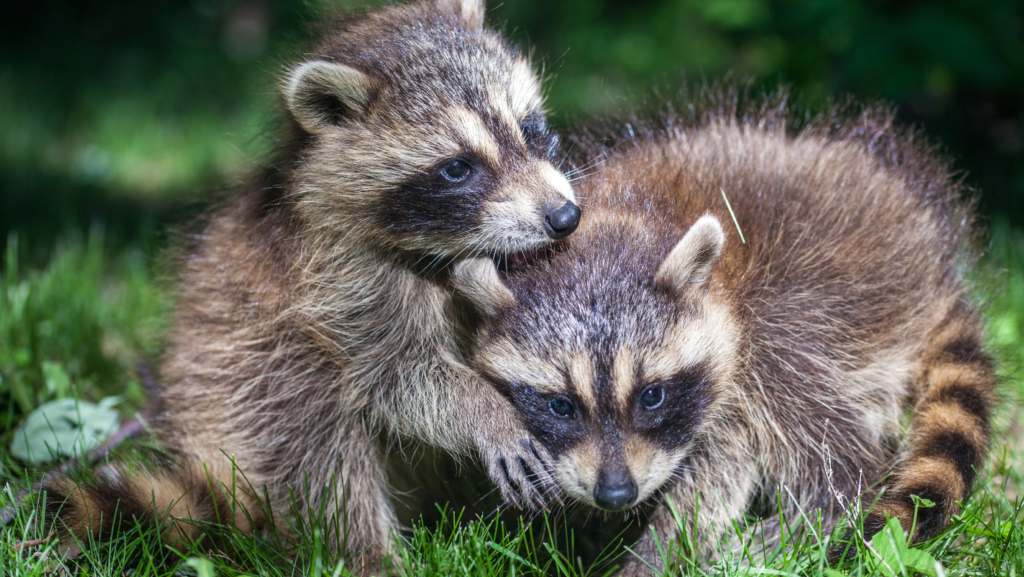Raccoons: The Resourceful Guardians of the Night
Birth:

Raccoons (Procyon lotor), native to North America, are charismatic mammals known for their distinctive black mask and ringed tail. The journey of a raccoon begins in spring, when females, known as sows, give birth to a litter of kits. The typical litter size ranges from two to five kits, and they are born blind and deaf, relying entirely on their mother for care and nourishment.
Grown-Up Life:

As the kits grow, their distinctive markings become more apparent, and they develop a characteristic bushy tail. Raccoons are highly adaptable creatures, thriving in a variety of environments, from dense forests to urban areas. They are primarily nocturnal, using their keen senses of sight and hearing to navigate the night. Known for their intelligence, raccoons are adept problem solvers, using their dexterous paws to manipulate objects and open containers.
Food:
Raccoons are omnivores with a diverse diet that reflects their adaptability. Their diet includes fruits, nuts, insects, small mammals, amphibians, and even crustaceans. In urban areas, they are notorious for scavenging through garbage bins, showcasing their ability to exploit human environments for food resources. Raccoons are also known to wash their food in water before consuming it, a behavior that has earned them the nickname “wash-bear.”
Habitat:

Raccoons are highly adaptable and can be found in a variety of habitats, including forests, marshes, and urban areas. They are excellent climbers and swimmers, allowing them to navigate diverse landscapes with ease. Raccoons often create dens in tree cavities, abandoned burrows, or even man-made structures such as attics and crawl spaces.
Reproduction:
The mating season for raccoons typically occurs in late winter, with a gestation period of around 63 days. Female raccoons are known for their maternal dedication, creating nests for their kits and fiercely protecting them. Kits start venturing out of the den at around eight weeks, learning essential skills from their mother, such as foraging and climbing. Raccoons reach sexual maturity at one to two years of age, and the cycle of reproduction continues.
Death:

The lifespan of a raccoon in the wild is typically around two to three years, with various factors influencing their mortality. Predation by larger mammals, such as coyotes or bobcats, poses a threat, especially to young raccoons. Additionally, diseases like distemper and parasites can impact raccoon populations. In urban areas, collisions with vehicles are a significant cause of mortality for raccoons. Despite these challenges, raccoons are resilient, and their adaptability contributes to their survival in a variety of environments.
In conclusion, the life of a raccoon is a testament to adaptability and resourcefulness. From the vulnerable days as blind and deaf kits to their role as clever scavengers and agile urban dwellers, raccoons play a unique and important role in the ecosystems they inhabit. As they navigate the challenges of survival, raccoons continue to captivate and coexist with humans in a dynamic dance between the wild and the urban.

